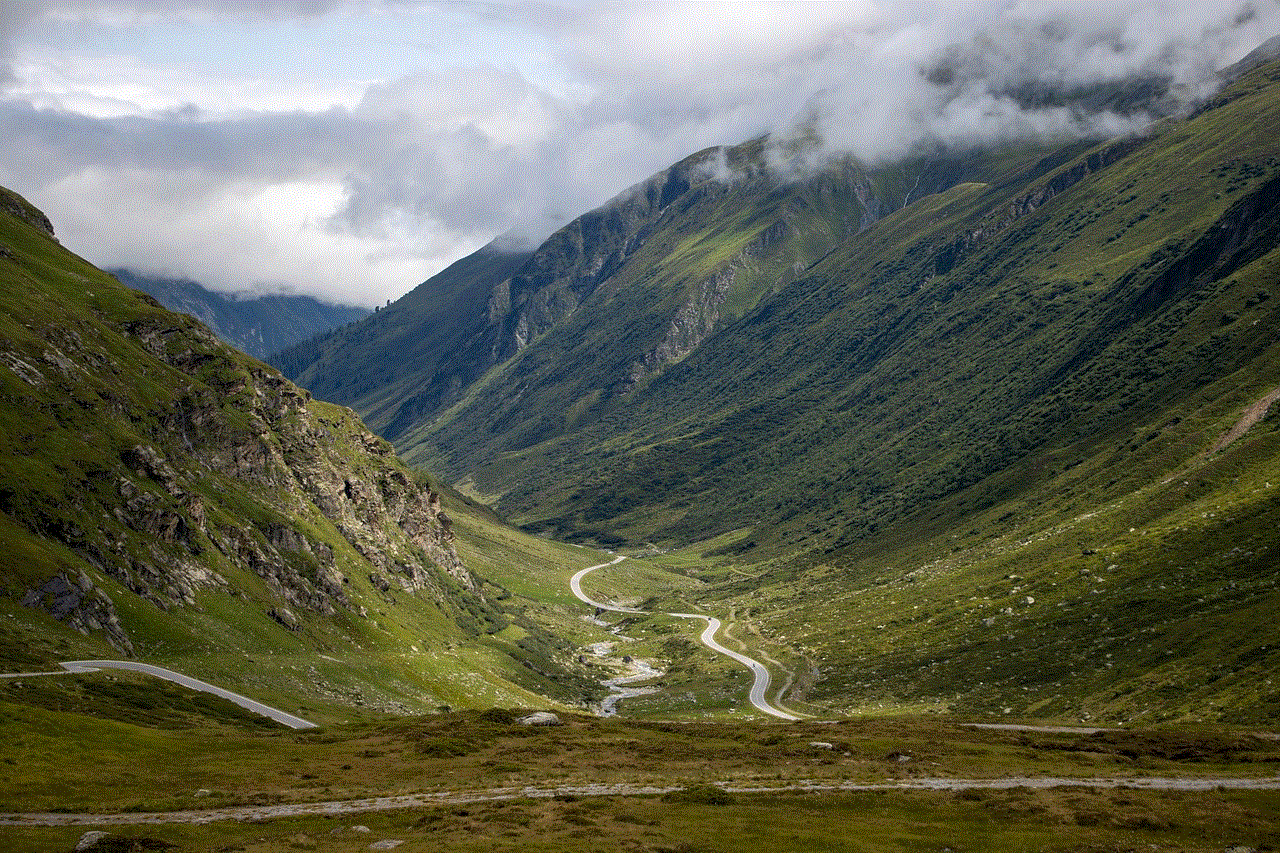how to screen record a story without them knowing
Title: A Comprehensive Guide to Screen Recording Stories Without Detection
Introduction:
Screen recording has become increasingly popular as a means of capturing and sharing digital content. However, there may be scenarios where you desire to screen record a story without the other party knowing. While it is essential to respect the privacy and consent of others, this article aims to provide guidance on screen recording stories ethically and responsibly. We will explore various methods and tools that can enable you to discreetly screen record stories without detection.
1. Understand the Importance of Consent:
Before delving into the technical aspects of screen recording, it is crucial to emphasize the significance of obtaining consent. It is generally considered unethical and potentially illegal to record someone’s story without their knowledge or consent. Respect their privacy and only proceed with screen recording if you have explicit permission.
2. Choose the Right Screen Recording Tool:
To screen record a story without detection, you need a reliable and discreet screen recording tool. Several software options are available, such as OBS Studio, Camtasia, and Snagit. These tools offer customizable recording settings and allow you to capture specific areas of the screen, ensuring that only the story content is recorded.
3. Familiarize Yourself with Screen Recording Settings:
Once you have chosen a screen recording tool, explore its settings to optimize your recording experience. Adjust the quality, frame rate, and audio settings according to your requirements. Ensure that the recording process is seamless and inconspicuous, minimizing any chances of the person discovering your actions.
4. Consider Privacy Filters:
Privacy filters are physical screens that can be placed over your device screen, limiting the viewing angle. By using a privacy filter, you can prevent others from seeing your screen content unless they are positioned directly in front of it. This can be an effective way to discreetly screen record a story without detection.
5. Capture the Screen Recording in a Secure Environment:
Choose a secure and private location to conduct your screen recording. Ensure that you are alone and minimize the chances of being observed. This will reduce the likelihood of the person discovering your actions and respect their privacy.
6. Utilize Third-Party Apps for Social Media Stories:
For social media stories, there are specific apps available that allow you to download stories without the other person being notified. These apps work by bypassing the notification system, enabling you to save stories discreetly. However, remember that using such apps could infringe upon the terms of service of the respective social media platform.
7. Consider Using a Second Device:
If you want to screen record a story without detection, using a second device can be an effective strategy. For example, you can use your smartphone to record the screen of your tablet or computer . This method allows you to capture the story without arousing suspicion, as the person will assume you are merely using your smartphone.
8. Disable Notifications:
To avoid any alerts or notifications that may give away your screen recording activities, disable notifications on your device temporarily. This will minimize the chances of the person becoming aware of your actions and allow for a discreet screen recording experience.
9. Be Mindful of Legal Implications:
It is vital to understand the legal implications surrounding screen recording without consent. Laws vary across jurisdictions, and in some cases, unauthorized screen recording can be illegal. Familiarize yourself with the laws in your region to ensure you are acting within legal boundaries.
10. Ethical Considerations:
While this guide provides methods for screen recording stories without detection, it is crucial to emphasize the importance of ethical behavior. Respect the privacy and consent of others, and only record stories if you have explicit permission. Prioritize open communication and ensure that your actions align with ethical standards.
Conclusion:
Screen recording stories without detection requires careful consideration of ethical implications, legal boundaries, and the privacy of others. While technology offers various tools and methods to discreetly screen record, it is essential to prioritize consent and respect. Always obtain permission before capturing someone’s story and use the methods discussed in this article responsibly and ethically.
change snap map location
Snapchat is a popular social media platform that allows users to share photos, videos, and messages with their friends and followers. One of the unique features of Snapchat is the Snap Map, which allows users to see the real-time location of their friends on a map. This feature has stirred up some controversy since its launch in 2017, as many users are concerned about their privacy and the potential dangers of sharing their location with others. As a result, Snapchat has introduced the option to change the Snap Map location, giving users more control over their privacy. In this article, we will explore the Snap Map feature, why users may want to change their location, and how to do it.
First, let’s dive into the Snap Map feature and how it works. When a user opens Snapchat, they can access the Snap Map by pinching the screen with two fingers. The map displays their friends’ Bitmoji avatars on their current location, represented by a cartoon-like version of themselves. The map also shows public Snaps from users in that area, making it a fun way to see what’s happening around the world. Users can also choose to share their location with their friends, which allows them to see each other’s Bitmoji on the map. This feature is called “Ghost Mode,” and it is the default setting for all Snapchat users.



The Snap Map has received mixed reactions since its release. Some users find it entertaining and a great way to stay connected with their friends, while others have raised concerns about privacy and safety. The Snap Map’s default setting is Ghost Mode, but many users may not be aware of this feature or may have accidentally turned it off, making their location visible to others. This can be dangerous, especially for young users who may not be aware of the potential risks of sharing their location with strangers.
Another concern raised by users is the lack of control over their location. By default, the Snap Map shows the user’s real-time location, which may not always be ideal. For example, a user may not want their friends to know that they are at home or at work. This can also be an issue for users who travel frequently, as their friends may be able to track their every move. As a result, many users have been searching for ways to change their Snap Map location to have more control over their privacy.
Fortunately, Snapchat has introduced the option to change the Snap Map location, giving users the ability to choose where they want to appear on the map. This feature is called “My Places,” and it allows users to select specific locations that they want to share with their friends. They can add up to five places, such as their home, work, or favorite hangout spots. This way, their friends will only see their Bitmoji on the map when they are in these designated places, giving them more control over their location.
So, why would someone want to change their Snap Map location? There are several reasons why users may want to do this. The most common reason is to protect their privacy. By sharing their location with only specific places, users can limit the amount of information they are sharing with others. This is especially important for younger users who may not want their parents or guardians to know their whereabouts at all times.
Another reason could be for safety purposes. With the rise of online predators and cyberbullying, it is essential to be cautious about sharing personal information, including one’s location, online. By changing their Snap Map location, users can feel more secure knowing that their friends and strangers cannot track their every move.
Furthermore, some users may simply not want to share their location with anyone. This may be due to personal reasons, or they may not feel comfortable having their location visible to others. With the option to change their Snap Map location, users can choose to have their Bitmoji appear in a designated location that is not their actual location, giving them the privacy they desire.
Now that we understand why users may want to change their Snap Map location let’s discuss how to do it. To change your Snap Map location, follow these steps:
1. Open Snapchat and pinch the screen with two fingers to access the Snap Map.
2. Tap on the settings icon in the top right corner.
3. Scroll down and select “My Places.”
4. Tap on the “Add new place” button.
5. Enter the name of the location you want to add.
6. Select the location from the list provided.
7. Repeat the process to add up to five places.
8. Once you have added all the places you want, tap on the “Back” button.
9. Tap on the “Save” button to confirm your changes.



10. Your Snap Map location will now be updated to the designated places you have selected.
It is worth noting that changing your Snap Map location will only affect your friends on Snapchat. Public Snaps from users in that area will still be visible on the map. Additionally, if you have enabled Snap Map for a particular Story, your Bitmoji’s location will be shown based on the location of that Story, not the designated places you have selected.
In conclusion, the Snap Map feature on Snapchat has stirred up some concerns about privacy and safety since its launch. However, with the option to change the Snap Map location, users can now have more control over their privacy. By following the steps outlined above, users can choose to share their location with specific places, giving them the peace of mind they desire. With the rise of social media and the need for privacy, it is essential to be cautious about the information we share online. Snapchat’s decision to introduce the option to change the Snap Map location is a step in the right direction towards protecting its users’ privacy and safety.
horrible videos on youtube
In this digital age, we are exposed to an endless amount of content on the internet. From social media platforms to video streaming sites, there is no shortage of entertainment and information at our fingertips. However, among all the seemingly harmless and enjoyable content, there exists a dark side of the internet – horrible videos on youtube -reviews”>YouTube . These videos have gained notoriety for their disturbing and often graphic content, leaving viewers feeling disturbed and traumatized. In this article, we will delve into the world of horrible videos on YouTube, their impact on viewers, and the efforts being made to regulate and remove them from the platform.
The term “horrible videos” on YouTube encompasses a wide range of content, from shock videos to disturbing footage of real-life events. These videos often contain violence, gore, and disturbing imagery, with the intention of shocking and traumatizing viewers. Some examples of such videos include animal abuse, extreme acts of violence, and even footage of accidents and tragedies. These videos are often uploaded by anonymous users and spread quickly through social media, causing a ripple effect of fear and disgust among viewers.
One of the most infamous categories of horrible videos on YouTube is known as “creepy pastas” or “creepypastas”. These are fictional horror stories that are often accompanied by eerie images and music, creating a chilling atmosphere for viewers. The popularity of creepypastas has led to the creation of numerous YouTube channels dedicated solely to narrating these stories, with some garnering millions of views. While some may argue that these videos are purely for entertainment purposes, their disturbing nature can have a profound effect on viewers, especially on young and impressionable minds.
The impact of these horrible videos on YouTube has been a cause for concern among parents, mental health professionals, and even YouTube itself. The platform has faced criticism for not doing enough to regulate and remove these videos, with many arguing that they have a responsibility to protect their younger viewers. In 2019, a group of pediatricians wrote an open letter to YouTube, urging them to take action against these disturbing videos, citing their potential to cause psychological harm to children. This sparked a series of changes on the platform, such as disabling comments on videos featuring minors and implementing stricter content guidelines.
However, despite these efforts, horrible videos on YouTube continue to exist and are often found by unsuspecting viewers. This is due to the nature of the platform, where anyone can upload content without much regulation or censorship. Additionally, the algorithm used by YouTube to recommend videos often leads viewers down a rabbit hole, where they may come across increasingly disturbing content. This can be especially harmful to those who may already be struggling with mental health issues.
Moreover, the impact of these videos goes beyond just psychological harm. The spread of fake news and conspiracy theories through YouTube has been a growing concern in recent years. Horrible videos, such as those promoting conspiracy theories about major world events, can mislead viewers and perpetuate dangerous ideas. The spread of misinformation through these videos can have real-life consequences, leading to violence and unrest in some cases.
In response to these issues, YouTube has implemented stricter measures to remove and regulate content on their platform. This includes hiring more content moderators and using machine learning technology to flag and remove inappropriate videos. They have also introduced a “Restricted Mode” feature, which allows users to filter out potentially disturbing content. While these efforts are commendable, they are far from perfect, and many argue that more needs to be done to protect viewers from horrible videos on YouTube.
One of the main challenges in regulating these videos is the difficulty in determining what qualifies as “horrible” or “inappropriate” content. YouTube’s community guidelines are vague and leave room for interpretation, making it challenging to draw a line between what is acceptable and what is not. This has led to the removal of some channels and videos that were deemed “inappropriate” but were not necessarily harmful or disturbing. This has sparked debates about freedom of speech and censorship on the platform, with some arguing that YouTube should not be the arbiter of what is suitable for viewers to see.



Furthermore, the anonymous nature of the internet makes it challenging to hold those responsible for creating and uploading these videos accountable. Many of these videos are uploaded by users with fake or anonymous accounts, making it difficult for authorities to take action against them. This has led to calls for stricter laws and regulations to be put in place to prevent the spread of horrible videos on YouTube.
In conclusion, the existence of horrible videos on YouTube is a cause for concern, and their impact on viewers cannot be ignored. While YouTube has taken steps to regulate and remove these videos, more needs to be done to protect viewers, especially children, from being exposed to disturbing and harmful content. This includes stricter content guidelines, better moderation, and increased accountability for those responsible for creating and uploading these videos. As viewers, it is also our responsibility to be mindful of the content we consume and to report any inappropriate videos to the platform. Only by working together can we make the internet a safer and more enjoyable space for all.